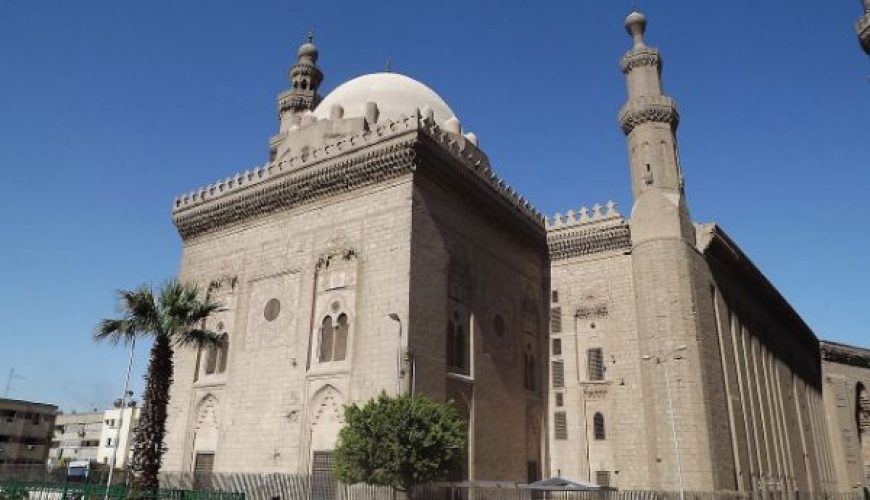History and architecture of Sultan Hassan School
The Sultan Mosque and Madrasah is an archaeological building bearing the number (14 AD 33) in the Islamic antiquities records. It is located in Salah al-Din Square, in the Citadel in the Al-Khalifa neighbourhood in Cairo. It was established by (Sultan Hassan bin Al-Nasir Muhammad) in (757 AH / 1356 AD), and construction was completed after seven years in (764 AH / 1363 AD).
Sultan Hassan is the son of Sultan (Al-Nasir Muhammad) bin (Sultan Al-Mansur Qalawun). He was born in (735 AH / 1334 AD), and his name was (Qamari), but when he took over the Sultanate, he changed his name to (Hassan), and he was known as (Sultan Hassan).
Sultan Hassan assumed the Sultanate for the first time in (748 AH / 1347 AD), and he was then (13 years old). Four years did not pass until the Mamluk princes conspired against him (1351 AD), so they removed him and arrested him and appointed his brother (Al-Salih Salah Al-Din Saleh) as Sultan.
However, he was able to return to power again after three years, so he took over the Sultanate in (1354 AD), and at that time, he seized power on his own. Great strife occurred between him and the Mamluk Prince (Yalbugha Al-Khakiki) that led to his isolation again, and he tried to escape. Still, the Mamluk princes were able to arrest him in the area (Al-Mataria) east of Cairo in (1361 AD). Historians did not tell us what happened to him, nor did they tell us about how he died or was killed.
But Sultan Hassan left us his mosque and school, which historians and archaeologists consider the most beautiful mosques in Cairo and all of Egypt, the best buildings of the Mamluk era in all, and the pride of Islamic architecture in the East as a whole. The school’s site in the past was a market called the Horse Market, and it had a palace that was built by his father (Al-Nasir Muhammad bin Qalawun) to live in (Prince Yalbugha Al-Yahyawi). Sultan Hassan demolished this palace and built this school in his place.
The madrasa consists of an open middle courtyard with 34.60 x 32 m; in the middle is a niche covered with a wooden dome resting on eight marble columns. And around it were four iwans, which consisted of four schools, and each school was a small mosque. Each school taught four Islamic schools of thought, namely Shafi’i, Maliki, Hanbali, and Hanafi. The largest of these schools is the Hanafi school, with an area of 898 square meters. This school is the eastern Iwan of the mosque (the qibla iwan), and it has a white marble pulpit to the right of the mihrab. There is also a marble bench in this Iwan.
Sultan Hassan had appointed teachers and observers in the school and made salaries for them, and appointed for each of the four schools of thought a sheikh and one hundred students, and appointed a teacher for the interpretation of the Qur’an, and appointed with him thirty students, and appointed a teacher of the Prophet’s hadith, a reciter to read the hadith and with them thirty students. He was appointed in the tribal Iwan a sheikh mufti. And he was appointed as a teacher who knew the seven readings, and he appointed two to monitor attendance and absence, one at night and the other during the day.
He also prepared a library and appointed a trustee for it, and attached to the school two offices to teach orphans the Qur’an and calligraphy, and decided for their clothing and food. He appointed three doctors, one an internist, the other an ophthalmologist, and the third a surgeon, who came to the mosque every day to treat sick employees and students.


Comment (0)